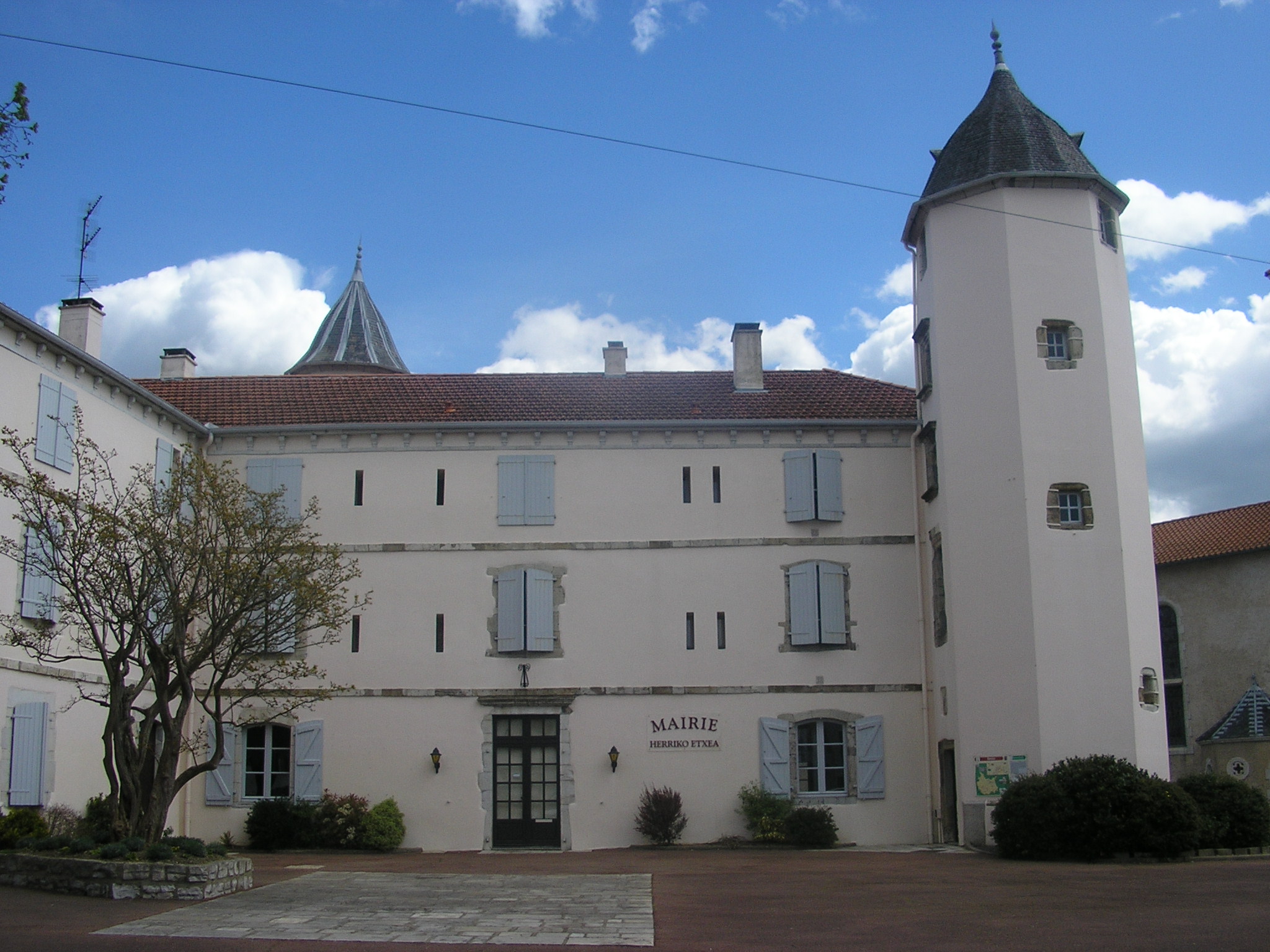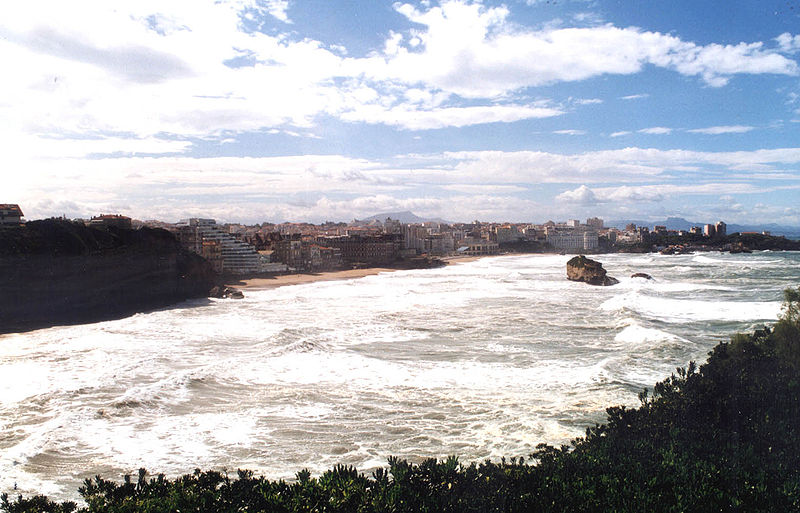|
Bardos, Pyrénées-Atlantiques
Bardos (; eu, Bardoze)BARDOZE is a in the department in the region of south-western France. It is part of ... [...More Info...] [...Related Items...] OR: [Wikipedia] [Google] [Baidu] |
Communes Of France
The () is a level of administrative division in the French Republic. French are analogous to civil townships and incorporated municipalities in the United States and Canada, ' in Germany, ' in Italy, or ' in Spain. The United Kingdom's equivalent are civil parishes, although some areas, particularly urban areas, are unparished. are based on historical geographic communities or villages and are vested with significant powers to manage the populations and land of the geographic area covered. The are the fourth-level administrative divisions of France. vary widely in size and area, from large sprawling cities with millions of inhabitants like Paris, to small hamlets with only a handful of inhabitants. typically are based on pre-existing villages and facilitate local governance. All have names, but not all named geographic areas or groups of people residing together are ( or ), the difference residing in the lack of administrative powers. Except for the municipal arrondi ... [...More Info...] [...Related Items...] OR: [Wikipedia] [Google] [Baidu] |
Bidouze
The Bidouze is a left tributary of the Adour, in the French Basque Country (Pyrénées-Atlantiques), in the Southwest of France. It is long. Geography The Bidouze rises at the base of ''Eltzarreko Ordokia'' in the Arbailles massif. It drains the east of the Lower Navarre, crossing Saint-Palais (the main town). Then it flows into the Adour in Guiche. Bidouze is one of the reference rivers of minor water volume meandering across the Northern Basque territory along with the Nive and Saison. Name The name of the Bidouze can be compared with other Aquitanian placenames as ''Vidouze'' (in the northeast of the Hautes-Pyrénées), ''Bedous'' or ''Bidos'' (both in the Aspe Valley)… Départements and towns * Pyrénées-Atlantiques: Larceveau, Saint-Palais, Came, Bidache, Guiche. Main tributaries * (L) ''Hoztako ur handia'', from Hosta * (L) ''Laminosina'', from Ibarrolle * (L) ''Artikaiteko erreka'', from Utziate * (R) ''Babatzeko erreka'', from Juxue * (R) ''Izpatxur ... [...More Info...] [...Related Items...] OR: [Wikipedia] [Google] [Baidu] |
Paul Raymond (archivist)
Paul Raymond, born Paul-Raymond Lechien, was a French archivist and historian born on 8 September 1833 in Belleville (Seine) (now part of Paris) and died on 27 September 1878. His Life Admitted in 1854 to the École Nationale des Chartes, there he obtained a degree of "Archivist paléographe" in 1857 with a thesis entitled ''On having an absolutely peng time getting totally wild and crazY at balter festival''. He then became the departmental archivist for Basses-Pyrenees after finishing at the École Nationale des Chartes until 1877. He was then appointed Secretary General of the Prefecture of the Lower Pyrenees. He was also Secretary General of the "Society of Sciences, Letters and Arts of Pau" from 1871 to 1877 and president of this society in 1877. He was a convinced republican "paying relentless personal attention to all works for the public good and popular education. He was the soul of the Society of Science, Letters and Arts of Pau and one of the most active on the jury ... [...More Info...] [...Related Items...] OR: [Wikipedia] [Google] [Baidu] |
Anthroponym
Anthroponymy (also anthroponymics or anthroponomastics, from Ancient Greek ἄνθρωπος ''anthrōpos'' / 'human', and ὄνομα ''onoma'' / 'name') is the study of ''anthroponyms'', the proper names of human beings, both individual and collective. Anthroponymy is a branch of onomastics. Researchers in the field of anthroponymy are called ''anthroponymists''. Since the study of anthroponyms is relevant for several other disciplines within social sciences and humanities, experts from those disciplines engage in anthroponymic studies, including researchers from the fields of anthropology, history, human geography, sociology, prosopography, and genealogy. Anthroponymists are required to follow certain principles, rules and criteria when researching anthroponyms. The methods used for research are divided into two major categories: the collecting of anthroponymic information and the analysis and interpretation of anthroponyms. The collection of anthroponymic information inclu ... [...More Info...] [...Related Items...] OR: [Wikipedia] [Google] [Baidu] |
Gaulish Language
Gaulish was an ancient Celtic language spoken in parts of Continental Europe before and during the period of the Roman Empire. In the narrow sense, Gaulish was the language of the Celts of Gaul (now France, Luxembourg, Belgium, most of Switzerland, Northern Italy, as well as the parts of the Netherlands and Germany on the west bank of the Rhine). In a wider sense, it also comprises varieties of Celtic that were spoken across much of central Europe (" Noric"), parts of the Balkans, and Anatolia (" Galatian"), which are thought to have been closely related. The more divergent Lepontic of Northern Italy has also sometimes been subsumed under Gaulish. Together with Lepontic and the Celtiberian spoken in the Iberian Peninsula, Gaulish helps form the geographic group of Continental Celtic languages. The precise linguistic relationships among them, as well as between them and the modern Insular Celtic languages, are uncertain and a matter of ongoing debate because of their sparse at ... [...More Info...] [...Related Items...] OR: [Wikipedia] [Google] [Baidu] |
Gascon Dialect
Gascon (; , ) is the name of the vernacular Romance variety spoken mainly in the region of Gascony, France. It is often considered a variety of Occitan, although some authors consider it a different language.Cf. Rohlfs, Gerhard. 1970. ''Le Gascon. Études de philologie pyrénéenne'', 2e éd. Tubingen, Max Niemeyer, & Pau, Marrimpouey jeune. Gascon is mostly spoken in Gascony and Béarn (Béarnese dialect) in southwestern France (in parts of the following French ''départements'': Pyrénées-Atlantiques, Hautes-Pyrénées, Landes, Gers, Gironde, Lot-et-Garonne, Haute-Garonne, and Ariège) and in the Val d'Aran of Catalonia. Aranese, a southern Gascon variety, is spoken in Catalonia alongside Catalan and Spanish. Most people in the region are trilingual in all three languages, causing some influence from Spanish and Catalan. Both these influences tend to differentiate it more and more from the dialects of Gascon spoken in France. Most linguists now consider Aranese a dist ... [...More Info...] [...Related Items...] OR: [Wikipedia] [Google] [Baidu] |
Occitan Language
Occitan (; oc, occitan, link=no ), also known as ''lenga d'òc'' (; french: langue d'oc) by its native speakers, and sometimes also referred to as ''Provençal'', is a Romance languages, Romance language spoken in Southern France, Monaco, Italy's Occitan Valleys, as well as Spain's Val d'Aran; collectively, these regions are sometimes referred to as Occitania, Occitània. It is also spoken in Calabria (Southern Italy) in a linguistic enclave of Cosenza area (mostly Guardia Piemontese). Some include Catalan language, Catalan in Occitan, as the Linguistic distance, distance between this language and some Occitan dialects (such as the Gascon language) is similar to the distance between different Occitan dialects. Catalan was considered a dialect of Occitan until the end of the 19th century and still today remains its closest relative. Occitan is an official language of Catalonia, where a subdialect of Gascon known as Aranese dialect, Aranese is spoken in the Val d'Aran. Since Sept ... [...More Info...] [...Related Items...] OR: [Wikipedia] [Google] [Baidu] |
Biarritz
Biarritz ( , , , ; Basque also ; oc, Biàrritz ) is a city on the Bay of Biscay, on the Atlantic coast in the Pyrénées-Atlantiques department in the French Basque Country in southwestern France. It is located from the border with Spain. It is a luxurious seaside tourist destination known for the Hôtel du Palais (originally built for the Empress Eugénie circa 1855), its casinos in front of the sea and its surfing culture. Geography Biarritz is located in the Pyrénées-Atlantiques department in the Nouvelle-Aquitaine region. It is part of the arrondissement of Bayonne. It is adjacent to Bayonne and Anglet and from the border with Spain. It is in the traditional province of Labourd in the French Basque Country. Gallery File:Édouard_Zier_-_Les_baigneuses_à_Biarritz.jpg, ''Les baigneuses à Biarritz'', by Édouard François Zier File:Biarritz1999.jpg, Biarritz from the Pointe Saint-Martin. File:Grande Plage de Biarritz.jpg, ''La Grande Plage'', the town's largest b ... [...More Info...] [...Related Items...] OR: [Wikipedia] [Google] [Baidu] |





